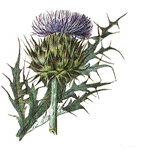Papers in the Biological Sciences

Svata M. Louda Publications
Document Type
Article
Date of this Version
2004
Abstract
Phenological synchrony of a consumer population with its resource populations is expected to affect interaction intensity. We quantified phenological variation and synchrony of populations of an invasive Eurasian flower head weevil, Rhinocyllus conicus, that consumes florets, ovules, and seeds of developing flower heads of a native North American thistle, Cirsium canescens, in Sand Hills prairie in Nebraska, USA. Variation in timing of adult activity among weevil populations was larger than variation in timing of flower head development among C. canescens populations, and it drove the observed variation in the phenological synchrony between weevil and host plant populations. Furthermore, the degree of phenological synchrony between populations was significant in explaining variation in weevil egg load on the newly acquired host plant. Because population growth of C. canescens is limited by predispersal seed losses to floral herbivores, variation in the synchrony of herbivore and plant flowering will affect the density of the plant population. These results provide strong quantitative support for the hypothesis that the synchrony of insect activity with plant resources can determine the magnitude of impact of floral herbivores on their host plant populations.


Comments
Published in Oecologia 139 (2004), pp. 525–534; doi: 10.1007/s00442-004-1543-1 Copyright © 2004 Springer-Verlag. Used by permission.